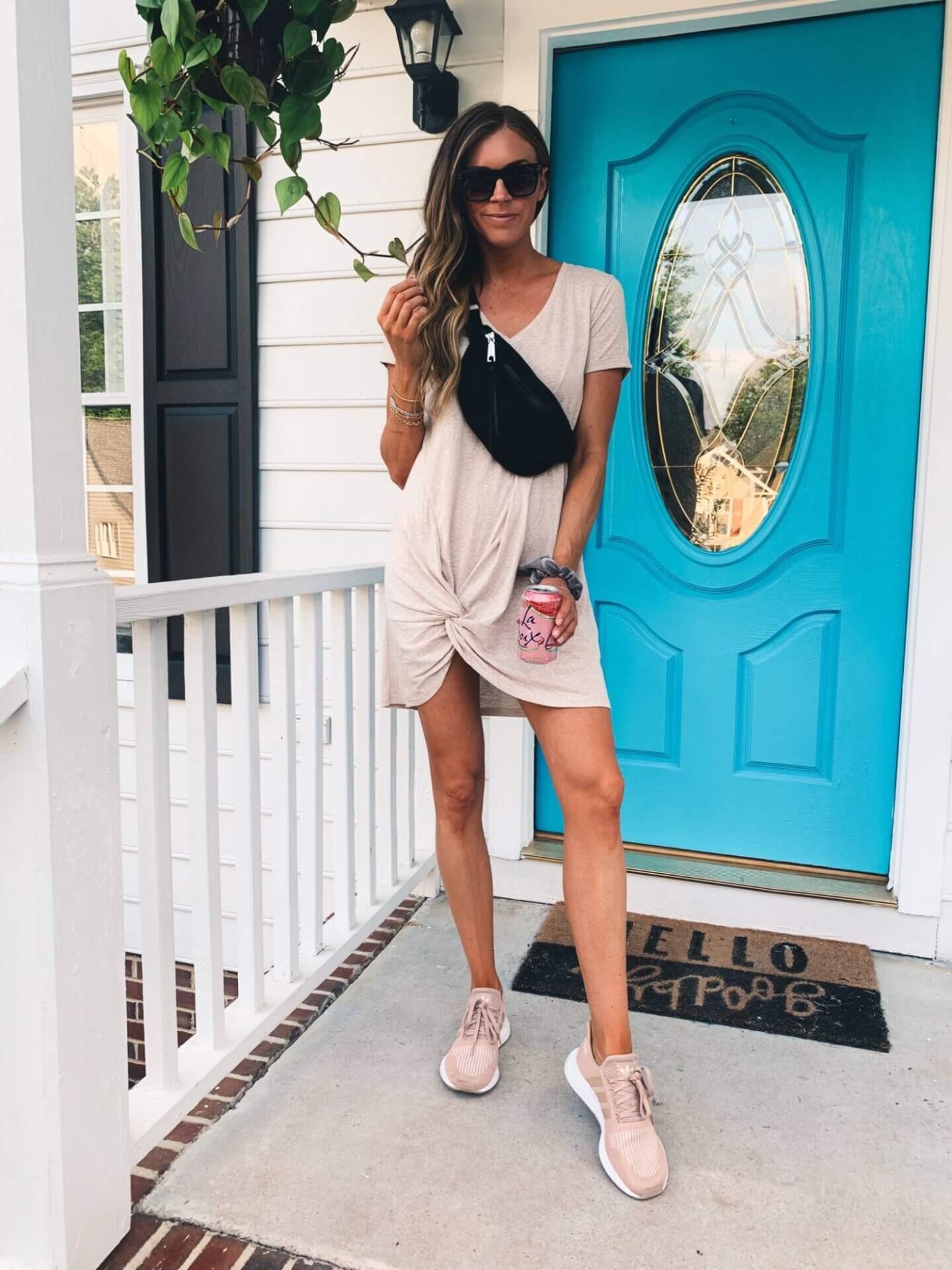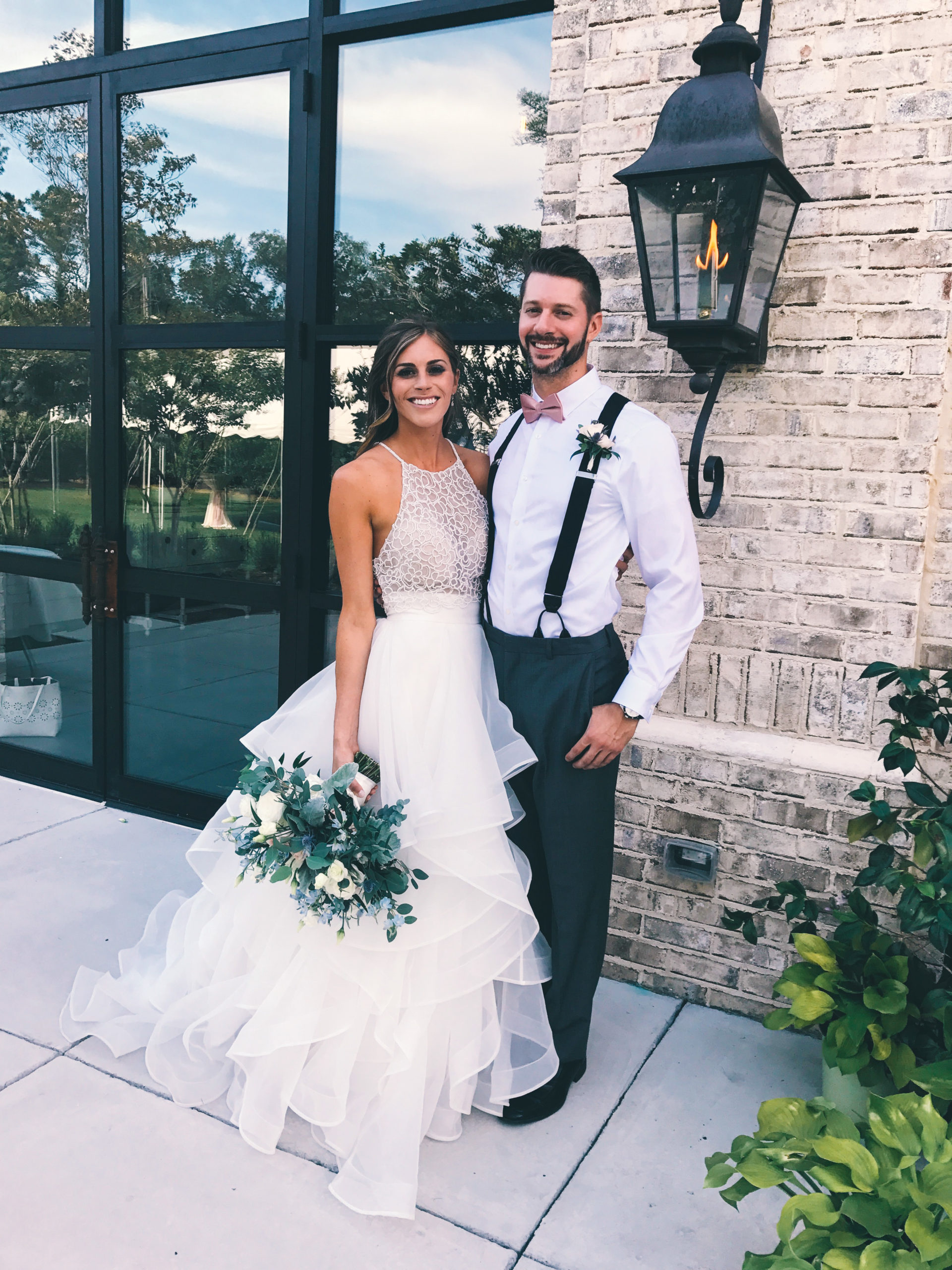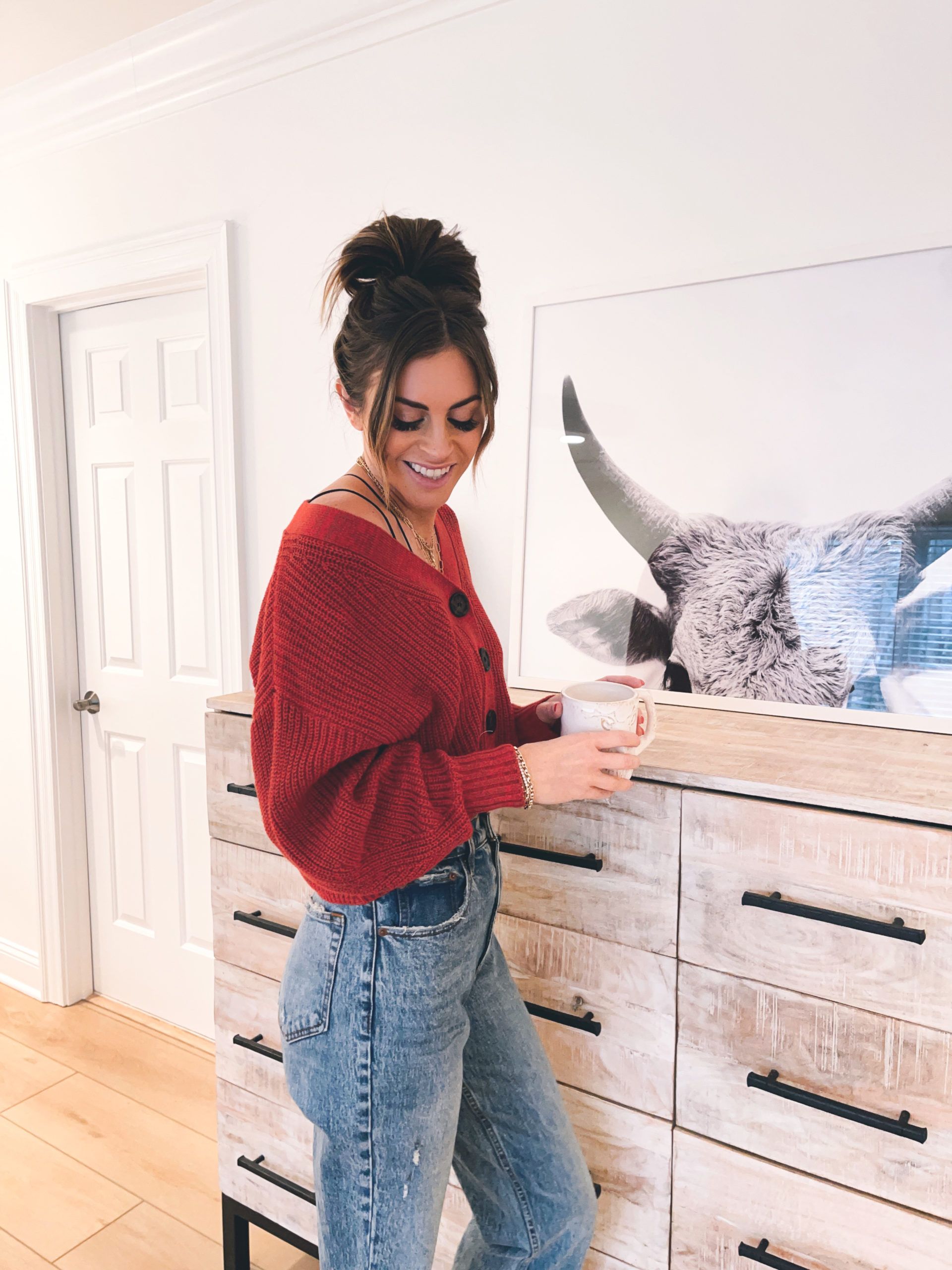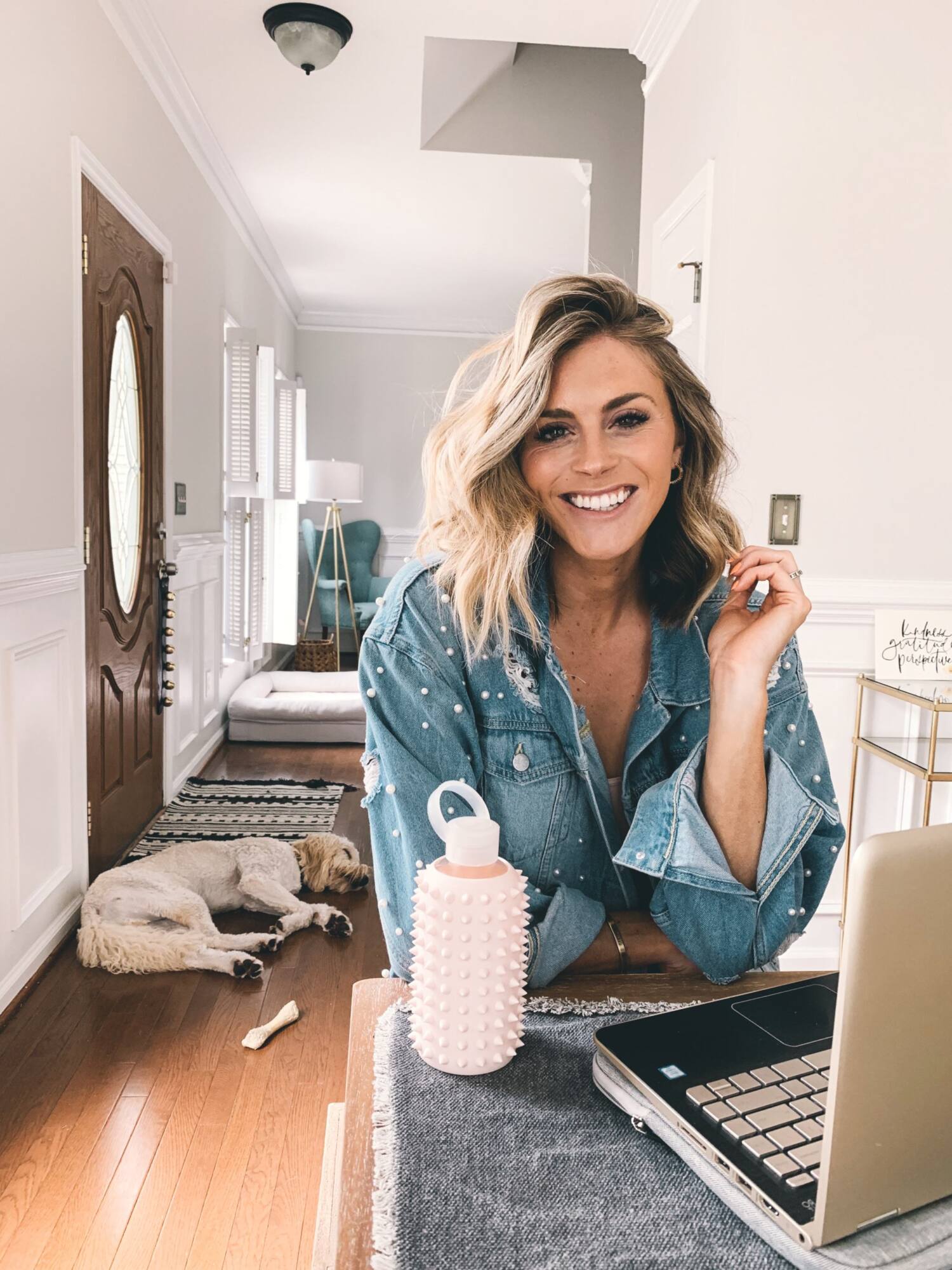
[show_shopthepost_widget id=”4085077″]
A lot of y’all have requested home-type posts so I’m going to keep them coming! And I feel like finance posts always seem to be popular so hopefully this is a good balance 😉
For starters, if you missed my recent post on all the “financial” stuff you need to know when buying a house, I’d start there. I think there are a lot of misconceptions about how much you need to put down for a downpayment and it’s not as daunting as you may think! I still recommend reading that entire blog post, but basically you can put down as little as 3%. But either way, whether you’re putting down 3%, 10% or 20% it’s still a good amount of money so I wanted to share some tips for how to start saving.
Before you start saving, try to get a ballpark amount of what you need to save. It’s much easier and motivating to save when you have a specific goal in mind! First, think of a ballpark range for the amount you’d spend on a house. Whether you’re planning on moving in a year, or 3 years, you probably have an idea if you’re going to be buying a $200k house or a $500K house, etc. And if don’t have any idea, you can talk with a mortgage lender over the phone and they can probably give you a ballpark range for what you’d be approved for (also keep in mind if you aren’t planning on buying for another several years it’s probably best to hold off on that convo as your finances can change a lot in that time). But once you have a general idea of the cost of the house you want to buy, decide how much you want to put down (at least 3%). Once you have an approximate amount, you can more easily implement the steps to save to get there!
Once you have a ballpark amount, break it down to what you need to save on a monthly basis. Let’s say you decide that you’re going to put down 25K on a house that you want to buy in 2 years. So if you take 25K divided by 24 (months) that’s $1041 a month. The first thing is to ask yourself is this number realistic? You may know off the top of you head if it is or isn’t but if you’re unsure you can start going through your finances (see the last 2 points below) and see how much is realistic for you to set aside on a monthly basis. If the $1041 is too much per month, you can either decrease your downpayment, or increase the amount of time to get there. You’ll know what works best for you and your situation!
After you know what you need to save monthly, I would set up automatic bank drafts. Something my Dad always taught me is if you never see the money, you’ll never miss it. Meaning, if money from you paycheck is automatically being deposited into your 401K, personal savings, etc. and you never see it hit your checking account in the first place, you’re not going to feeling you’re missing out on what you could be spending it on. So if we take our $1041 example, you may say that every 2 weeks when you get paid $520 will be automatically drafted into savings.
Some other options on how to approach this. Let’s say you don’t have a salaried job and your income has a lot of variability. Instead of having a set amount drafted, you can do it based off a percentage system. This way, if you have some months that are slower than others you’re not feeling too strapped, but if you’re making more one month you can put aside more. So even though there is more variability in when you may reach your goal (but hey, you could hit it sooner than later!) you know you’re actively setting money aside. Maybe it’s 5% or maybe you can do 20%. Either way, pick a percentage and at the end of every month you can take a look at what you billed and transfer that percentage into savings.
Think of what your largest expenses are each month. For most of us, some of our biggest expenses are car payments, rent/mortgage, student loans etc. I understand that these aren’t as easy to adjust as how much you spend at restaurants each month or doing online shopping but they are definitely things to consider if you’re saving for a house. For example, if you’re looking at a new car you can consider getting one with a lower car payment or maybe you hold onto your older car for longer than you planned on. When we were saving for our first house, I continued to drive my 10 year old Camry. Even after we bought this house, I thought of buying a newer, nicer car but I felt like my money would be better spent either investing into our business or saving for something like our next house. Point being, sometimes you have to be patient and pass on something you want in the moment for something that you know will pay off bigger later. Another way to save would be if you live in a more expensive apartment now, but you want to buy a house in several years, maybe when your lease ends you move to a less expensive apartment for the time being so try can save more on the monthly basis. Just some ideas!
Go through your bank statements and see where else you can cut back. Aside from the big expenses each month, we all have daily expenses that add up to more than we think! At the beginning of this year, Stephen and I went through our bank statements and we realized how much money we spent on going out to eat, day care for the dogs, random coffee runs, etc. We then made a monthly budget on the website Mint. You can set up alerts for when you go over set budgets but it also helps you see all your credit cards, loans, and available cash in one place. So I would recommend going through your own statements and seeing where you can cut back and set budgets in! Everything adds up!
Have a visual to keep you motivated. Okay, so this one is more of a random tip for all of you that are more visual people! You know when you see those thermometers on a poster board and people color the inside of them as they get closer to their goal?! LOL. Well, something that like that can really helpful. I found this one for saving for a house on Etsy but you could easily make your own as well.
Alight guys, I think that’s about all I got! If y’all have any other tips please share them below! xxC









comments +